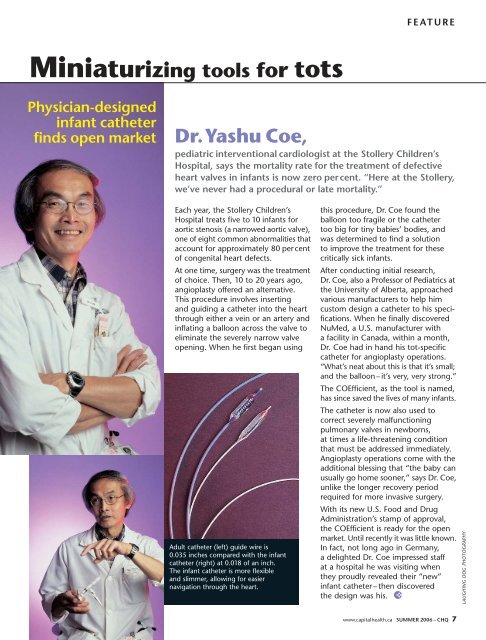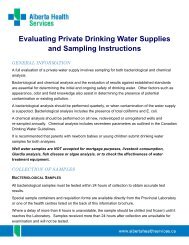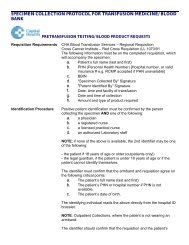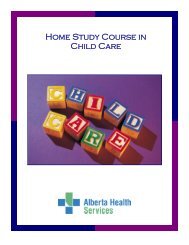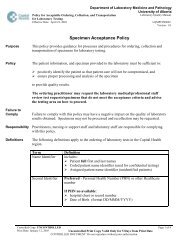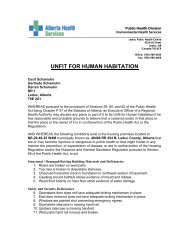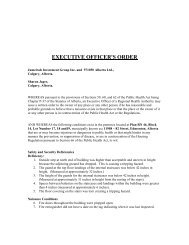The COEfficient The COEfficient - Capital Health
The COEfficient The COEfficient - Capital Health
The COEfficient The COEfficient - Capital Health
Create successful ePaper yourself
Turn your PDF publications into a flip-book with our unique Google optimized e-Paper software.
FEATURE<br />
Miniaturizing tools for tots<br />
Physician-designed<br />
infant catheter<br />
finds open market<br />
Dr.Yashu Coe,<br />
pediatric interventional cardiologist at the Stollery Children’s<br />
Hospital, says the mortality rate for the treatment of defective<br />
heart valves in infants is now zero per cent. “Here at the Stollery,<br />
we’ve never had a procedural or late mortality.”<br />
Each year, the Stollery Children’s<br />
Hospital treats five to 10 infants for<br />
aortic stenosis (a narrowed aortic valve),<br />
one of eight common abnormalities that<br />
account for approximately 80 per cent<br />
of congenital heart defects.<br />
At one time, surgery was the treatment<br />
of choice. <strong>The</strong>n, 10 to 20 years ago,<br />
angioplasty offered an alternative.<br />
This procedure involves inserting<br />
and guiding a catheter into the heart<br />
through either a vein or an artery and<br />
inflating a balloon across the valve to<br />
eliminate the severely narrow valve<br />
opening. When he first began using<br />
Adult catheter (left) guide wire is<br />
0.035 inches compared with the infant<br />
catheter (right) at 0.018 of an inch.<br />
<strong>The</strong> infant catheter is more flexible<br />
and slimmer, allowing for easier<br />
navigation through the heart.<br />
this procedure, Dr. Coe found the<br />
balloon too fragile or the catheter<br />
too big for tiny babies’ bodies, and<br />
was determined to find a solution<br />
to improve the treatment for these<br />
critically sick infants.<br />
After conducting initial research,<br />
Dr. Coe, also a Professor of Pediatrics at<br />
the University of Alberta, approached<br />
various manufacturers to help him<br />
custom design a catheter to his specifications.<br />
When he finally discovered<br />
NuMed, a U.S. manufacturer with<br />
a facility in Canada, within a month,<br />
Dr. Coe had in hand his tot-specific<br />
catheter for angioplasty operations.<br />
“What’s neat about this is that it’s small;<br />
and the balloon – it’s very, very strong.”<br />
<strong>The</strong> <strong>COEfficient</strong>, as the tool is named,<br />
has since saved the lives of many infants.<br />
<strong>The</strong> catheter is now also used to<br />
correct severely malfunctioning<br />
pulmonary valves in newborns,<br />
at times a life-threatening condition<br />
that must be addressed immediately.<br />
Angioplasty operations come with the<br />
additional blessing that “the baby can<br />
usually go home sooner,” says Dr. Coe,<br />
unlike the longer recovery period<br />
required for more invasive surgery.<br />
With its new U.S. Food and Drug<br />
Administration’s stamp of approval,<br />
the <strong>COEfficient</strong> is ready for the open<br />
market. Until recently it was little known.<br />
In fact, not long ago in Germany,<br />
a delighted Dr. Coe impressed staff<br />
at a hospital he was visiting when<br />
they proudly revealed their “new”<br />
infant catheter – then discovered<br />
the design was his.<br />
LAUGHING DOG PHOTOGRAPHY<br />
www.capitalhealth.ca SUMMER 2006 ~ CHQ 7


